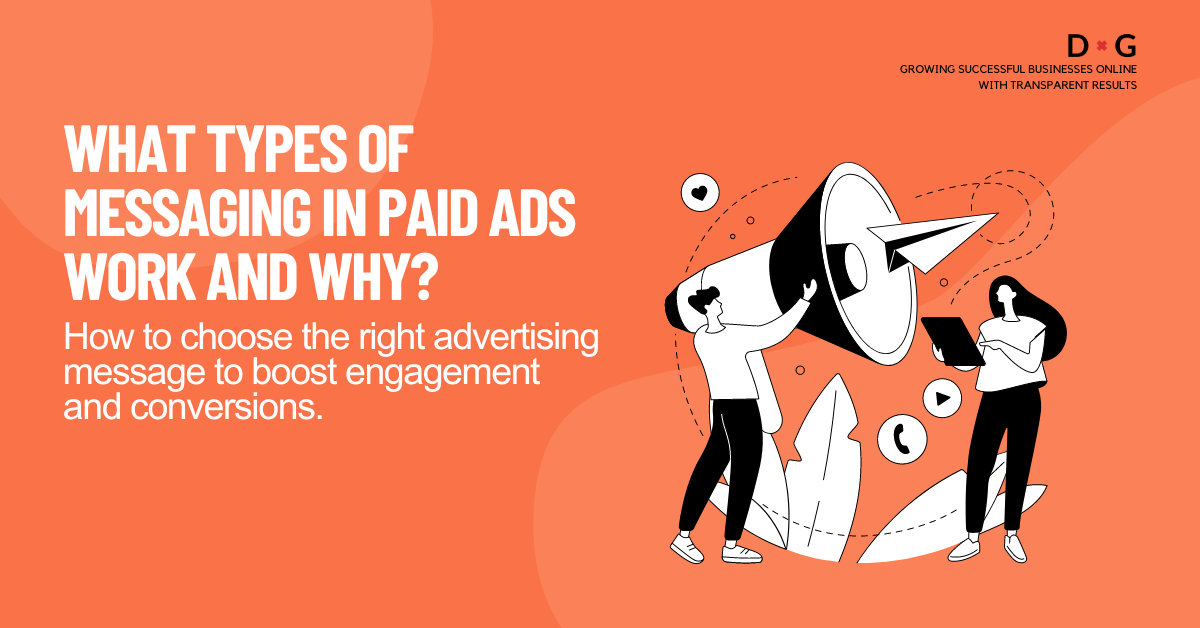
When creating paid ads, the message you convey is crucial. Effective messaging not only grabs your audience’s attention but also resonates with them, sparking interest in your product or service. However, the impact of your message varies depending on what you’re selling and who your audience is. In this post, we’ll break down the types of messaging in paid ads that connect with audiences and drive results, helping you build a successful campaign.
Emotional Messaging
Emotional messaging appeals to feelings like happiness, love, or nostalgia to capture attention. Ads that feature heartwarming stories or show special moments often rely on this method. For example, a family holiday ad that focuses on the joy and memories created uses emotional messaging.
Why it Works:
People tend to remember experiences that stir up emotions, making these ads more memorable. They are also more likely to be shared, as viewers want others to feel the same emotions.
This type of message helps you form a deeper connection with your audience, potentially leading to increased sales and customer loyalty. Just ensure that the emotions you’re tapping into feel authentic and align with your brand.
Rational Messaging
Rational messaging focuses on factual data and logical reasoning, drawing attention to the product or service’s features and advantages. This is the approach you’ll see in ads for products like laptops, cars, or financial services, where customers need more information to make a decision. An ad for a laptop, for example, might highlight its long battery life, processing speed, and price.
When to Use It:
Rational messaging is ideal for products that require a thoughtful purchase decision. People want to understand the tangible benefits before spending money. Make sure your ads clearly explain how your product solves a problem or enhances the buyer’s life, using simple language or visuals like charts to make it digestible.
Fear-Based Messaging
Fear-based messaging highlights potential negative outcomes if the consumer doesn’t take action. For instance, a health insurance company might highlight the potential financial burden of medical bills if you don’t have adequate coverage.
What to Watch Out for:
While this method can be compelling, it’s important not to scare your audience too much. The aim is to pinpoint the issue and show how your product serves as the optimal solution. Keep the message helpful, showing how you can alleviate their concerns rather than intensifying fear.
When done well, fear-based ads can create a sense of urgency, pushing people to act quickly because they don’t want to face the negative consequences.
Using Urgency and Scarcity
This approach drives action by making the audience feel that time is running out or supply is limited. Phrases like ‘Offer ends soon’ or ‘Exclusive deal for the first 100 customers’ are classic examples. The idea is to create a sense of urgency, prompting the viewer to make a quick decision to avoid missing out.
Why It Works:
People tend to act fast when they think an opportunity won’t last. This feeling of urgency or scarcity increases excitement and can lead to impulsive buying decisions. It’s particularly effective for time-sensitive promotions, flash sales, or exclusive, limited-edition items.
Social Proof
Social proof messaging involves showing that others have already bought, used, or enjoyed the product, using elements like customer reviews, testimonials, or endorsements from influencers. It sends a message that says, “Others trust us, so you should too.”
Why It’s Effective:
People tend to trust the opinions of others more than direct marketing messages from brands. Including reviews or showcasing ratings in your ads builds trust and credibility. This helps potential buyers feel more confident in choosing your product, increasing the likelihood that they’ll follow through with a purchase.
Conclusion:
Selecting the right type of messaging can be the key to your ad’s success or failure. Whether it’s emotional, rational, fear-based, urgency-driven, or relying on social proof, each style has its unique benefits. The key is to tailor your message to what matters most to your audience.
For more tips on crafting impactful messaging or ad copy, check out our other blogs on copywriting frameworks for paid advertising!
